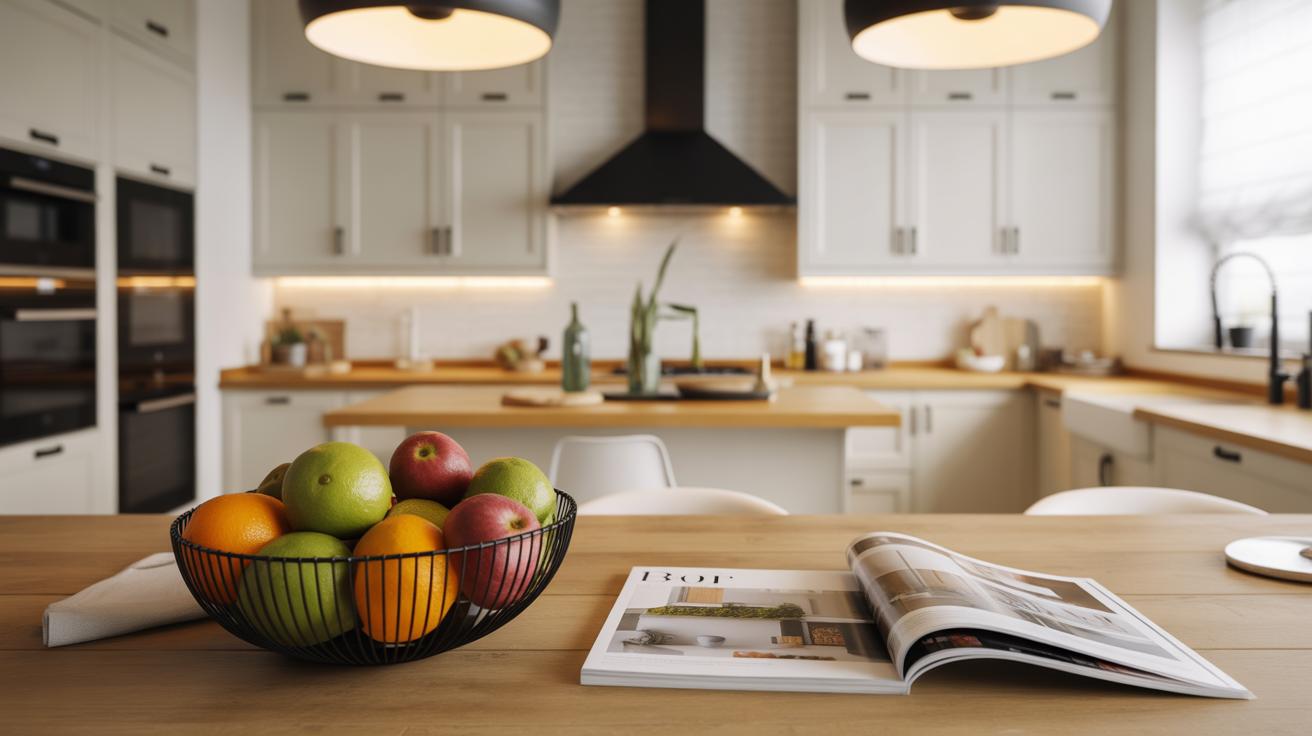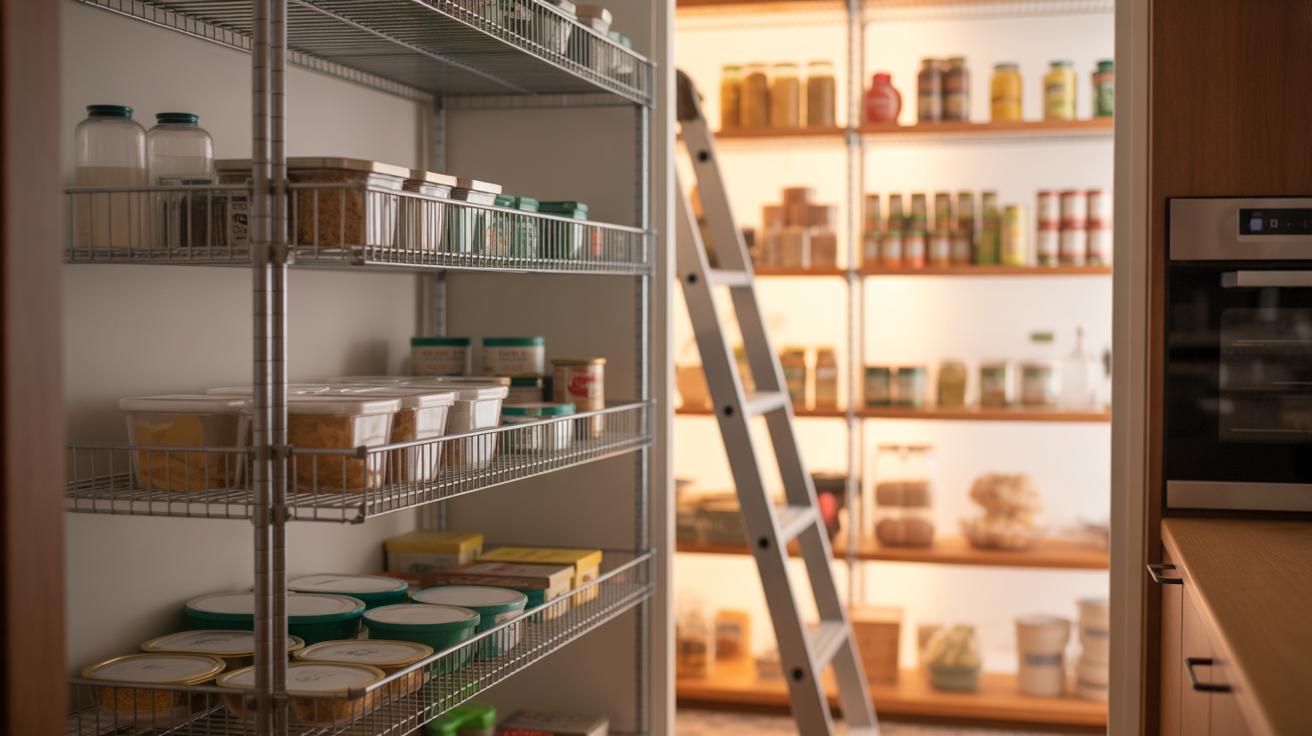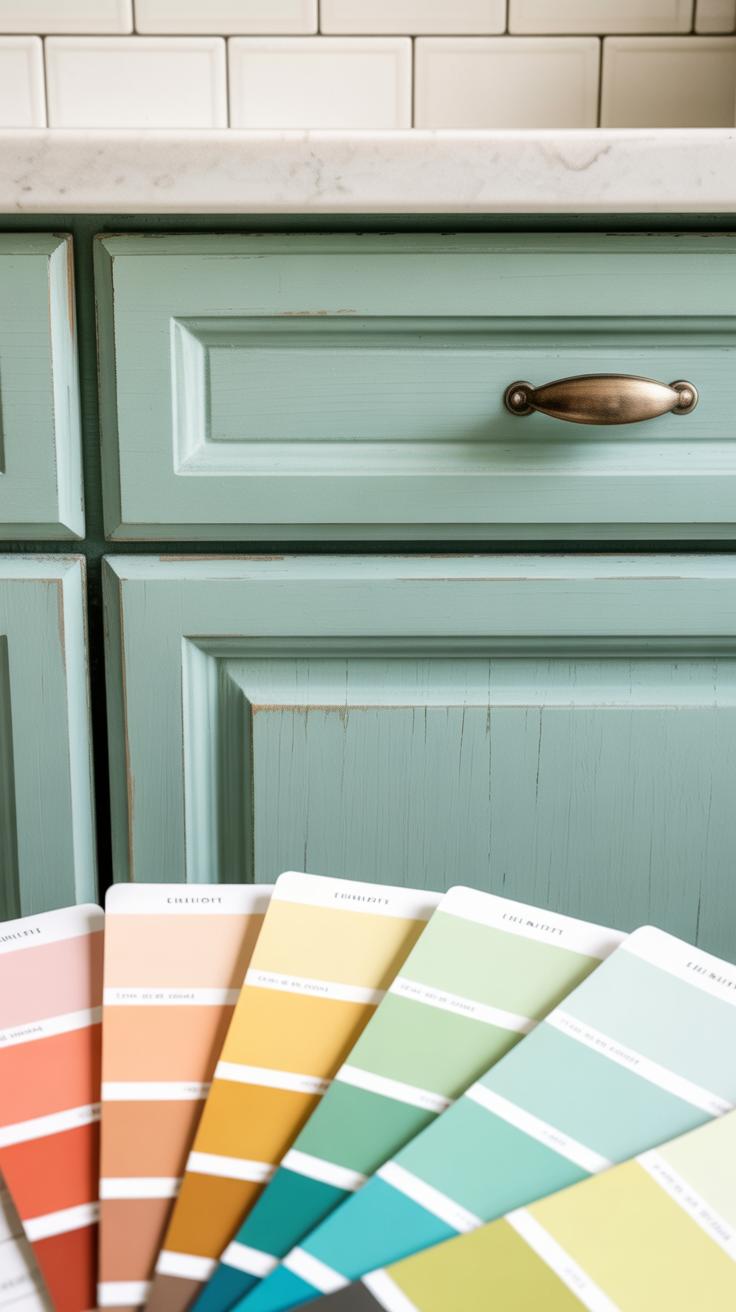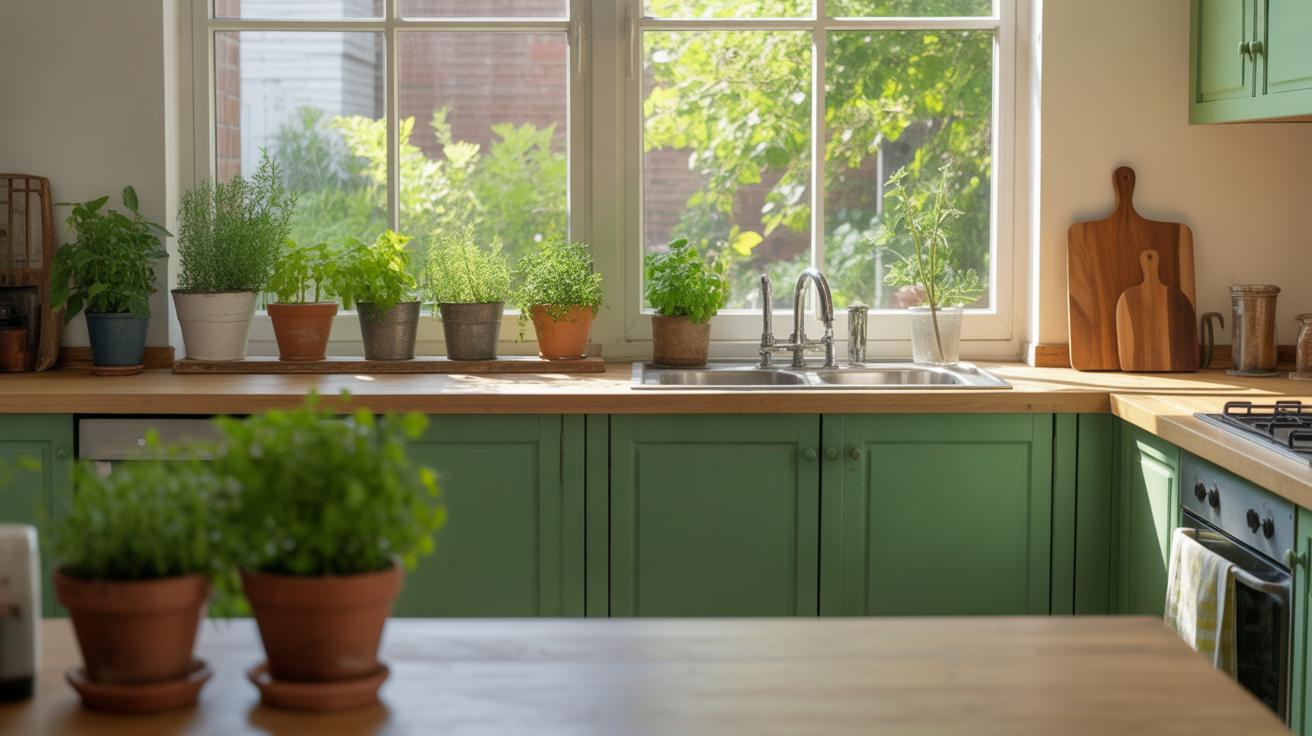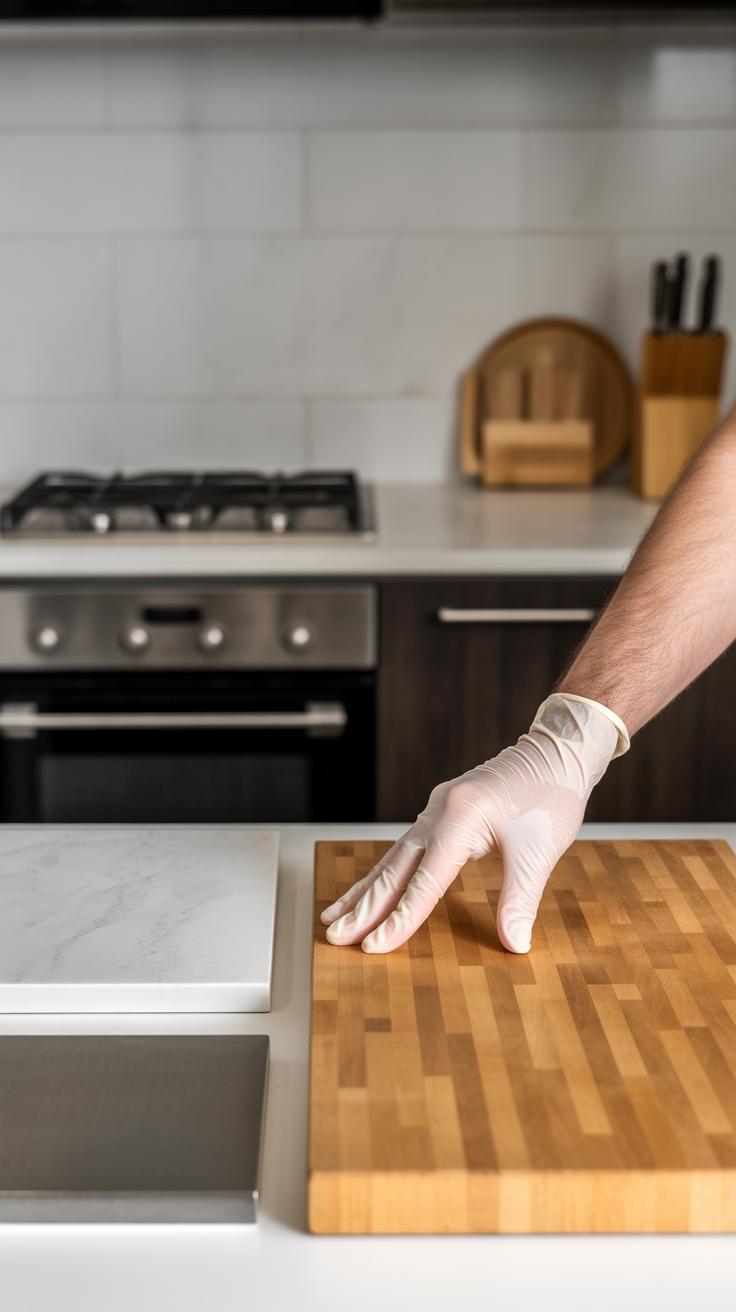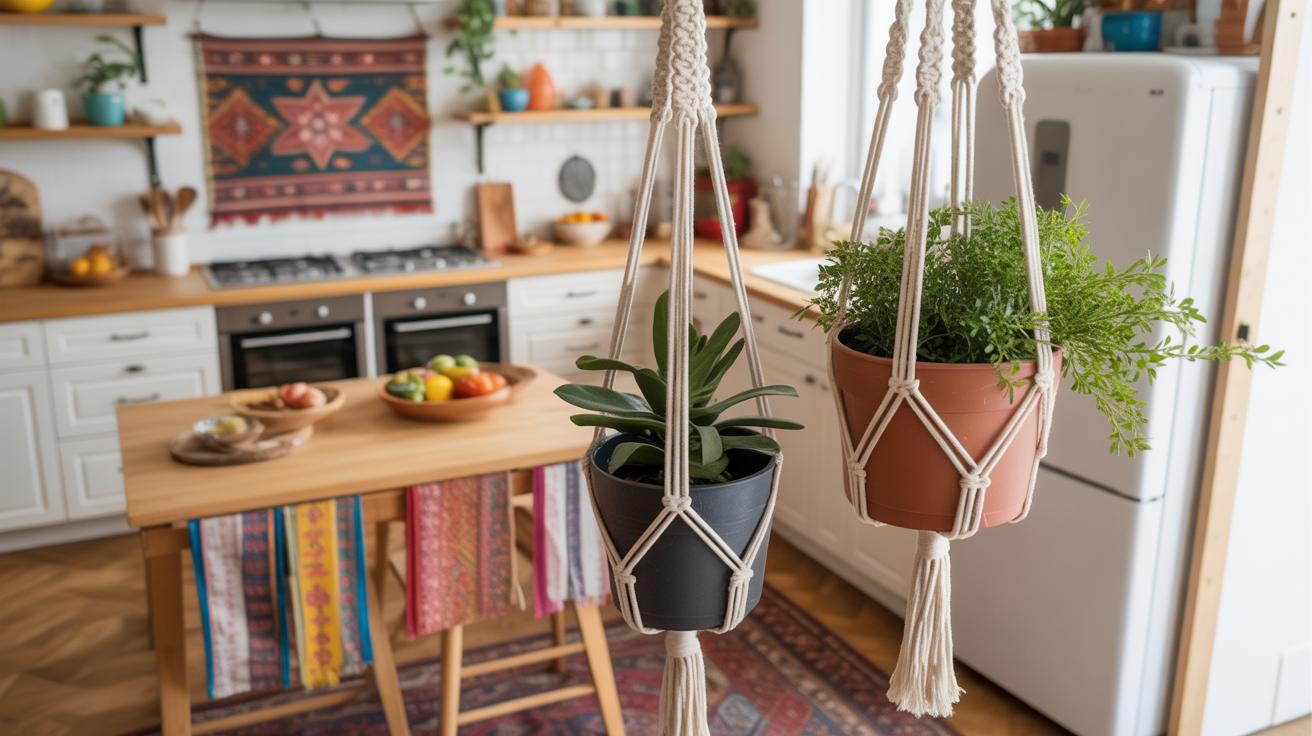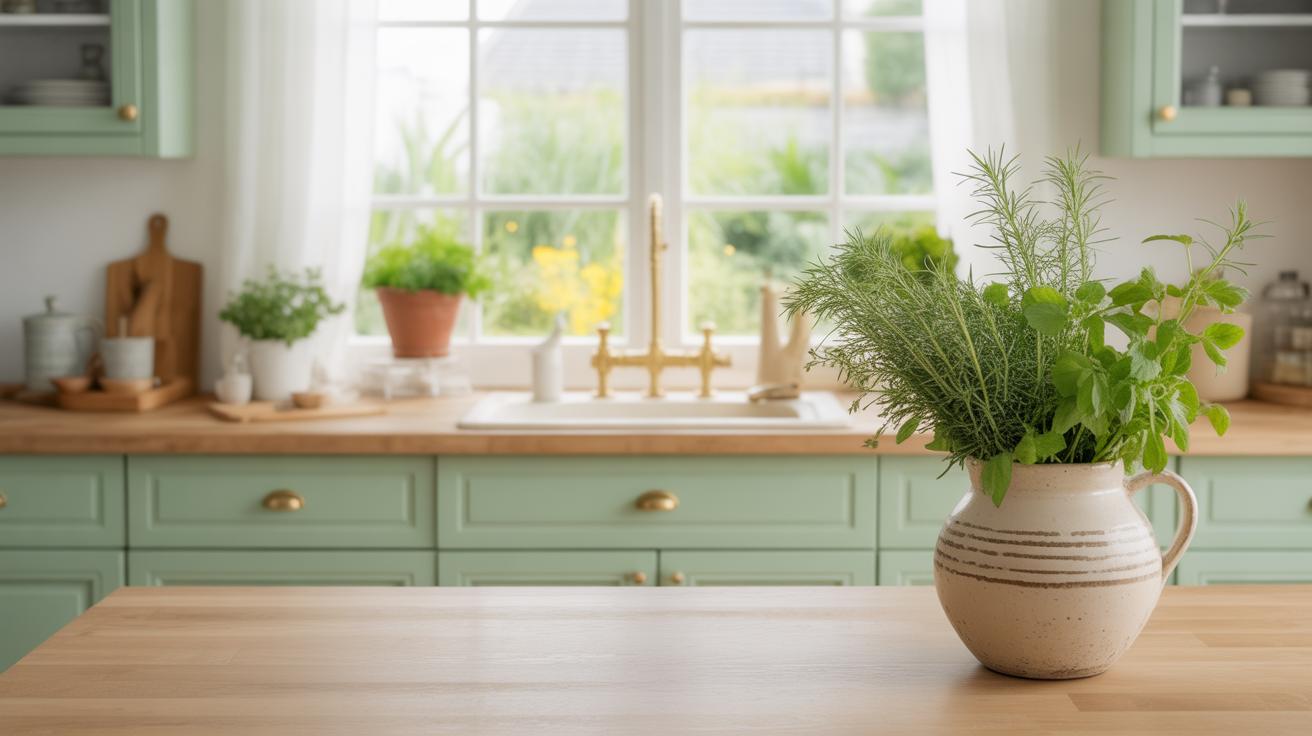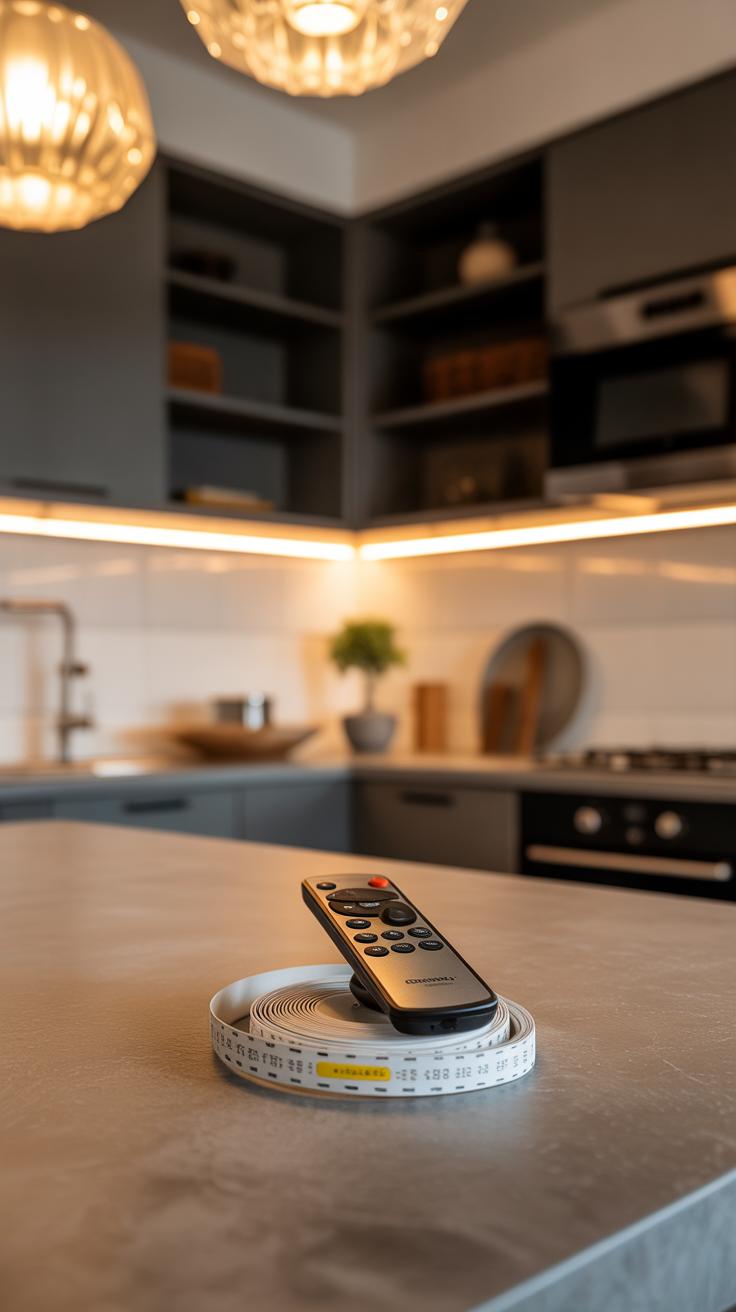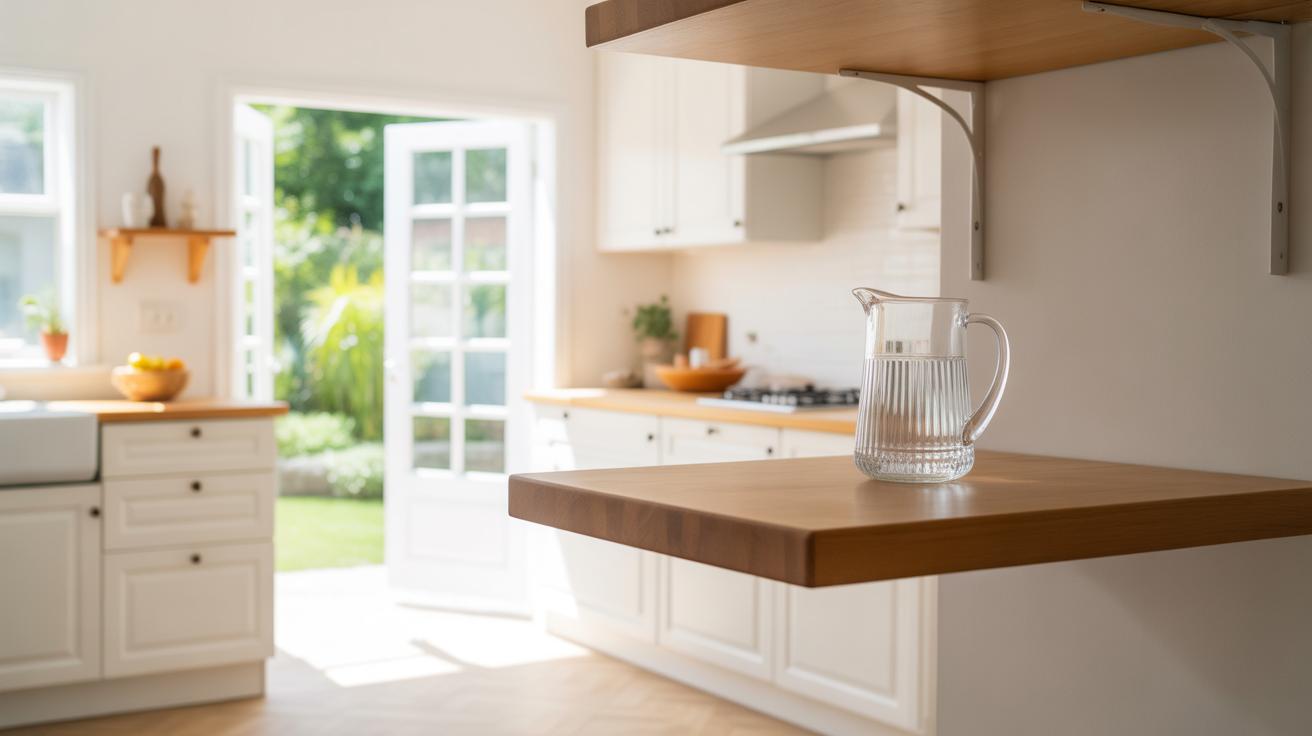Introduction
Your kitchen is more than just a place to cook. It is the heart of your home, where meals are prepared and memories are made. With the right design ideas, your kitchen can become a beautiful space that reflects your style and meets your needs. Kitchen Inspiration Design Ideas For Refreshing Your Home Aesthetic can help you create a fresh and inviting kitchen that makes daily tasks enjoyable.
This article explores simple and practical ways to improve your kitchen. From choosing the right colors to organizing your space efficiently, you will find clear and actionable tips. Whether you are updating a small kitchen or redesigning a large one, these ideas will inspire you to create a kitchen that combines beauty and function smoothly.
Choosing the Right Kitchen Layout
Popular Kitchen Layout Styles
Picking a kitchen layout can feel a bit overwhelming, given the options. Let’s break down a few common ones and their features, so you can get a clearer picture.
The U-shape layout wraps counters and cabinets around three walls. It’s great for larger kitchens and offers lots of storage and workspace. I like how it naturally creates a work triangle between sink, stove, and fridge, making movement quite fluid. That said, it can feel closed off if your kitchen isn’t big enough.
An L-shape kitchen uses two adjoining walls, leaving space for a dining table or island. It’s versatile, fits well in small to medium spaces, and keeps the area open. From my experience, it works well for family cooking since it allows interaction beyond the kitchen, but it might limit counter space.
Galley kitchens are narrow, with counters facing each other. They’re compact and efficient but can feel cramped. I’ve found they suit apartments or smaller homes where space is tight but having everything within arm’s reach is key.
Open plan kitchens blur the line between cooking and living spaces. They feel roomy and social but can get messy fast. If you’re someone who loves entertaining while cooking, this might fit. But if you prefer separation, maybe not so much.
How to Select a Layout for Your Space
Start by measuring your kitchen and thinking about how you use it. Are you cooking solo or often with others? Do you entertain frequently, or is it mostly quick meals?
- Small kitchens may benefit from galley or L-shape layouts to save space and keep things handy.
- Medium spaces might handle a U-shape or open plan, especially if you want more storage or room for gatherings.
- Consider your cooking habits—do you need a lot of prep space, or maybe extra seating?
I remember wrestling with my own kitchen layout choice. My family’s habit of hanging around the kitchen pushed me toward an open plan, despite my slight preference for separation.
Ultimately, the best layout balances your space’s size, how you live, and how you want to feel when you’re there. Don’t rush—sometimes sketching ideas or trying temporary setups helps more than you’d think.
Picking Colors to Refresh Your Kitchen
Color shapes how a kitchen feels more than most people realize. It can make a space cozy or stark, playful or serious. So, picking the right palette isn’t just about trends—it’s about how you want your kitchen to function emotionally. Think about styles: a farmhouse kitchen often calls for muted greens or soft blues, while a minimalist space usually benefits from cool greys and whites.
For cabinets, you could go bold with navy or forest green to anchor the room. Walls, on the other hand, might be better suited to lighter tones like off-white or pale yellow to keep things balanced. Accessories are the perfect chance to add splashes of unexpected color—think copper handles, a red kettle, or patterned rugs.
Color Choices That Brighten and Warm
Light colors have this unbeatable way of bouncing natural light around, making even small kitchens feel wide open. Whites, creams, soft pastels—they’re simple but effective. Warm tones like terracotta, mustard, or soft cinnamon add a certain comfort, a sense of intimacy that’s hard to replicate.
Throwing in bolder accents can shake things up a bit, but it’s a fine line. A vibrant backsplash or bright bar stools can lift the mood, but too much can feel jarring or overwhelming. I once tried an intense red cabinet; it felt exciting at first but soon became a bit much. Sometimes, less really is more.
Combining Colors for Balanced Design
When pairing colors, the trick is finding harmony without dullness or clashing chaos. One approach is to pick one dominant color, a secondary shade, and a small accent. For example:
- Soft grey cabinets with sage walls and burnt orange accessories.
- Matte black cabinetry complemented by white walls and brass details.
- Warm beige paired with pale green and natural wood tones.
Don’t be afraid to test samples on your walls and cabinets. Lighting changes colors drastically throughout the day, so what looks good in the store might feel different at home. Have you ever seen a paint chip that seemed perfect but turned cold and dull under your kitchen lights? Yeah, me too. So, try before you commit.
Selecting Kitchen Materials and Finishes
When choosing materials for your kitchen, wood, metal, stone, and laminate often come up as the main contenders. Each has its own set of strengths—and quirks. Wood, for example, offers warmth and character. It ages beautifully but needs some care to avoid scratches and moisture damage. I’ve seen kitchen cabinets that look almost antique after a few years, which some people really love, but others might find high-maintenance.
Metal surfaces add a sleek, modern edge and can handle heavy use. Stainless steel counters or cabinet hardware stand up well to wear, though fingerprints and smudges show right away, so cleaning can feel endless. Stone, like granite or quartz, combines durability with a natural appeal—though quartz is a bit easier on the upkeep. It resists stains better, but cracks are possible if you’re careless.
Laminate often gets overlooked but can be surprisingly versatile and affordable. It comes in many colors and patterns, though it’s less resistant to heat and scratches than stone or metal. Still, some newer laminates feel quite sturdy and look good enough to fool you at first glance.
Material Options for Cabinets and Countertops
Cabinet materials often boil down to solid wood, MDF, plywood, or laminate. Solid wood cabinets feel substantial and last long but come at a higher price and need protection against humidity. MDF and plywood handle warping better but vary in quality and can chip if not well-made. Laminate cabinets suit a modern look and can mimic other materials but may peel over time.
For countertops, granite offers durability and heat resistance but can stain if untreated. Quartz has a polished feel and less upkeep, though it can be pricier. Concrete counters are trendy and customizable but might crack and require sealing. Solid wood countertops bring warmth but ask for regular sealing and sanding.
How Finishes Affect Style and Care
The finish you pick plays a surprising role in both kitchen style and cleaning chores. Matte finishes offer a subtle, understated look and do a better job hiding fingerprints and smudges, though they sometimes trap dirt in texture. Glossy finishes shine and brighten a space, but they demand frequent wiping—they show every smudge and streak.
Textured finishes, like brushed metal or distressed wood, add depth and character but can be harder to clean thoroughly. You might spend more time getting into grooves or ridges, yet visually, these finishes soften wear and tear, which some find worth the effort. When in doubt, ask yourself—how much time do you want to spend cleaning? That will often steer you toward or away from certain finishes.
Maximizing Kitchen Storage Solutions
Smart Cabinet and Shelf Ideas
Clever cabinet choices can really change how your kitchen feels and works. Pull-out cabinets, for example, make accessing pots and pans simpler—no more awkward bending or digging around in deep spaces. Tall storage units take advantage of vertical space, which is often underused. You might think stacking things higher could be inconvenient, but with the right setup, like adding a step stool nearby, it can actually keep clutter off the counters.
Open shelving is another option that divides opinion. Some people find it makes a kitchen feel brighter and more inviting, while others worry about dust or the pressure to keep everything perfectly neat. Still, it can display everyday dishes or cookbooks, making them part of the decor and easy to grab. You might want to mix open shelves with closed cabinets to strike a balance.
Organizing Drawers and Counters Efficiently
Drawers often become catch-alls for random stuff, but adding dividers turns chaos into order. You can separate utensils, gadgets, or even baking tools in ways that suit your cooking habits. Sometimes investing in adjustable dividers helps because your needs change over time, or you discover more essentials you want within reach.
On the countertop, keeping items visible yet tidy can be tricky. Using containers or trays to group things like oils, spices, or frequently used tools prevents a messy look. This also stops running around searching for that one special bottle or jar. Still, the line between useful and clutter can be thin—deciding what stays out depends on your daily rhythm in the kitchen.
Incorporating Lighting for Function and Mood
Lighting in the kitchen often gets overlooked, but it really shapes how the whole space feels and works. There are three main types you’ll want to consider: ambient, task, and accent. Each serves a different purpose, yet together, they balance function and atmosphere.
Ambient lighting provides general illumination—think ceiling fixtures or recessed lights. It’s the background glow that keeps the room bright enough to move safely. But, alone, it can feel flat or dull.
Task lighting is critical for areas where you cook, wash, or prep food. Without good light here, things get frustrating fast. You want focused, clear light over stoves, counters, and sinks to avoid shadows and mistakes. Under-cabinet LEDs or adjustable track lights often work well in these spots.
Finally, accent lighting highlights design elements or adds warmth. Little touches like under-cabinet strips or pendant lights over an island bring personality without overwhelming the space. They can make a kitchen feel less like a workspace and more inviting.
Consider placing task lighting directly over work surfaces, while ambient lighting fills the room without glaring. Accent lights around glass cabinets or in niches sneak in subtle highlights that change how the space feels as the day moves on. When setting up your kitchen lighting, ask yourself: Are you aiming for crisp utility, cozy evenings, or a bit of both? The answer will guide where and what types of lights you pick.
Choosing Practical Task Lighting
Task lighting deserves special attention because you rely on it most. For cooking zones, bright, cool light helps you see colors and textures clearly—an advantage when chopping or checking doneness. LED strips under cabinets are popular here because they stay out of sight but brighten counters well.
Above the sink, a focused light eliminates shadows and makes dishwashing less of a chore. Pendant lights work nicely if you want a stylish element, but simple flush mounts or directional spotlights also do the job.
Think about adjustable options too. Lights that pivot or dim give you control depending on what you’re doing or the time of day. Don’t forget that cords and switches should be easy to reach without hindering your workflow.
Using Accent Lights to Create Ambiance
Accent lights aren’t about function—they’re about mood. Under-cabinet lighting can double as soft night lighting, making early mornings or late nights less harsh. Warmer bulbs here add a cozy glow that contrasts nicely with the harsher task lights.
Decorative fixtures like chandeliers or uniquely shaped pendants can become a kitchen’s visual focal point. A bit of experimentation feels okay here—you might find you want a bold style or prefer subtle flickers of light that only show up when you dim the main sources.
Even small strips inside glass-front cabinets give an elegant touch by softly illuminating dishes or glassware. Lighting like this invites you to appreciate the details of your kitchen, shifting it from purely functional to something a little more relaxed and lived-in.
Adding Personal Touches to Your Kitchen
Your kitchen should say something about you—your tastes, your habits, even your quirks. One way to bring that personality forward is through art. A framed print or a small painting on a blank wall can shift the whole feel of the room. It doesn’t have to be gallery-worthy—sometimes a vintage poster or a travel souvenir mixed with your kitchen style can add unexpected charm. I remember hanging a quirky food illustration near my coffee station; it wasn’t a grand piece, but it made me smile every morning.
Textiles also bring warmth and softness, which kitchens often lack. Think beyond plain dish towels—go for colorful or patterned ones that contrast with your counters. Handwoven or embroidered towels, even an old tablecloth used as a wall hanging, can feel personal and practical at once.
Choosing unique accessories offers both function and character. Handcrafted bowls hold fruit in a way that mass-produced options rarely do. A set of mugs with mismatched but complementary designs can spark small conversations or just brighten your day. It’s these little choices that make the kitchen feel lived-in, not showroom perfect.
Plants are another way to soften the edges and bring life to kitchen spaces that often feel cold or clinical. Besides brightening the room, they improve air quality—and staring at greenery might even make you a little calmer while you cook. Pick plants that handle fluctuating light and humidity without much fuss. Herbs like basil, rosemary, or mint are popular because they’re useful too. Snake plants or pothos survive lower light and need less care, ideal for those who get busy (or forgetful) during the week.
Have you considered how a few small changes could refresh your kitchen’s energy? Sometimes even a little personality through objects and plants shifts the mood more effectively than a big renovation.
Selecting Appliances for Style and Use
Choosing kitchen appliances isn’t just about function anymore—you want them to match your kitchen’s look and support how you cook. First, think about what you really use daily versus the gadgets that seem nice in theory but gather dust. For example, if you rarely bake, a fancy convection oven might not be your top priority.
Appliance styles vary widely. Stainless steel remains popular, offering a clean, modern feel that pairs well with most kitchen designs. But maybe you’re drawn to retro appliances with bold colors and rounded edges—these can make a kitchen pop with personality. There’s also built-in appliances, which blend seamlessly into cabinetry for a sleek, minimalist vibe. Choosing one style can influence the whole room’s mood, so consider what fits your taste and kitchen’s architecture.
Don’t overlook energy ratings when selecting models. Appliances with better ratings save on bills and require less maintenance. Look for features that make your day easier: touch controls, self-cleaning options, or smart connectivity might add convenience without overwhelming you. Finding a balance between energy use and usability isn’t always straightforward; sometimes the most energy-saving options aren’t the simplest.
What matters most to you? Style, function, or a bit of both? Thinking through these questions helps you pick appliances that serve your needs while refreshing your kitchen’s feel. It’s a choice worth spending some time on, even if it takes a few extra visits to the store—or just scrolling endlessly online.
Planning Kitchen Workflow for Ease
Understanding Kitchen Workflow Basics
The kitchen work triangle is a concept that focuses on three main points: the sink, the stove, and the refrigerator. These areas need to be placed thoughtfully to make moving around easier when cooking. The idea is simple—keep these spots close enough to avoid too much walking, but not so close that the space feels cramped.
Why does it matter? Because a well-planned kitchen reduces unnecessary steps. Imagine reaching for ingredients, washing them, and then cooking without backtracking or bumping into counters. It sounds obvious, but the right layout often makes a big difference. You might even find cooking more enjoyable when you’re not constantly circling around.
Creating Spaces That Help Cooking and Cleaning
To craft a space that supports smooth cooking and cleaning, think about where each activity happens. Place your prep space near the sink for easy washing and chopping. If your stove is a bit far from the fridge, consider adding a small counter in between for staging ingredients or resting pots.
Some tips to reduce steps:
- Keep trash and recycling bins near prep and cleanup zones.
- Create a landing spot next to appliances for quick unloading.
- Combine storage for frequently used items near work areas.
Layouts like L-shape or U-shape kitchens often help to build this flow naturally. But sometimes, even a small kitchen can benefit by rearranging work zones to bring those three points closer. It takes trial and error, maybe even sketching, to see what arrangement feels less tiring during meal prep.
Updating Your Kitchen on a Budget
Refreshing your kitchen doesn’t need to involve a full remodel or a big budget. Small, thoughtful changes often make a bigger impact than you’d expect. Something as simple as painting your cabinets can change the entire feel of the room—especially if the current color feels outdated or too dark. It’s a bit of work but cheaper than replacing them, and you can pick a shade that brightens or modernizes the space.
Swapping out cabinet handles and drawer pulls is another inexpensive fix with a strong visual payoff. You’d be surprised how much personality new hardware adds. Whether you choose sleek matte black knobs or vintage brass handles, these small details come together to update the kitchen’s style quietly but effectively.
Don’t underestimate textiles like rugs or curtains. Adding these can soften the room, introduce color, and even improve acoustics. A runner near the sink or stove isn’t just pretty—it’s practical, too.
Affordable Improvements That Make a Difference
Here are some ideas that rarely cost much but do refresh your kitchen:
- Paint cabinets in a fresh, light color to open up the space. It’s less expensive than new cabinetry and looks clean.
- Replace old handles and knobs with something modern or classic, depending on your taste.
- Add simple décor like a bright rug or patterned curtains to bring in warmth and texture.
- Consider peel-and-stick backsplash tiles for a splash of personality without the mess or cost of real tile.
- Swap out lighting fixtures for budget-friendly options—you can find stylish pendants or refurbished lamps at reasonable prices.
Where to Save and When to Invest
It’s tempting to try and do everything cheaply, but some areas really benefit from the extra spend. For example, a good countertop upgrade can last years and improve both look and durability. I once hesitated on replacing old laminate, but switching to quartz made a noticeable difference in how I felt working in the space.
Save money on cosmetic changes like paint and hardware, but think about investing in appliances or countertops if yours are very outdated or problematic. Lighting deserves some thought too—poor lighting won’t be fixed just by a cheap bulb.
Ask yourself: which updates will you use every day and which are more about appearances? Let that guide your budget choices. Sometimes, the things that seem small—like a new faucet or a quality rug—make you enjoy your kitchen more without a full overhaul.
Conclusions
Refreshing your kitchen design can make a big difference in your home’s aesthetic. Small changes in layout, color, and materials can create a space that feels fresh and welcoming. By focusing on practical storage, lighting, and workflow, you can make your kitchen easier and more enjoyable to use every day.
Remember, your kitchen should reflect your style and meet your needs. Use the tips shared here to guide your choices. Whether you make small updates or larger changes, your effort will result in a kitchen that brings comfort and satisfaction to your home life.

